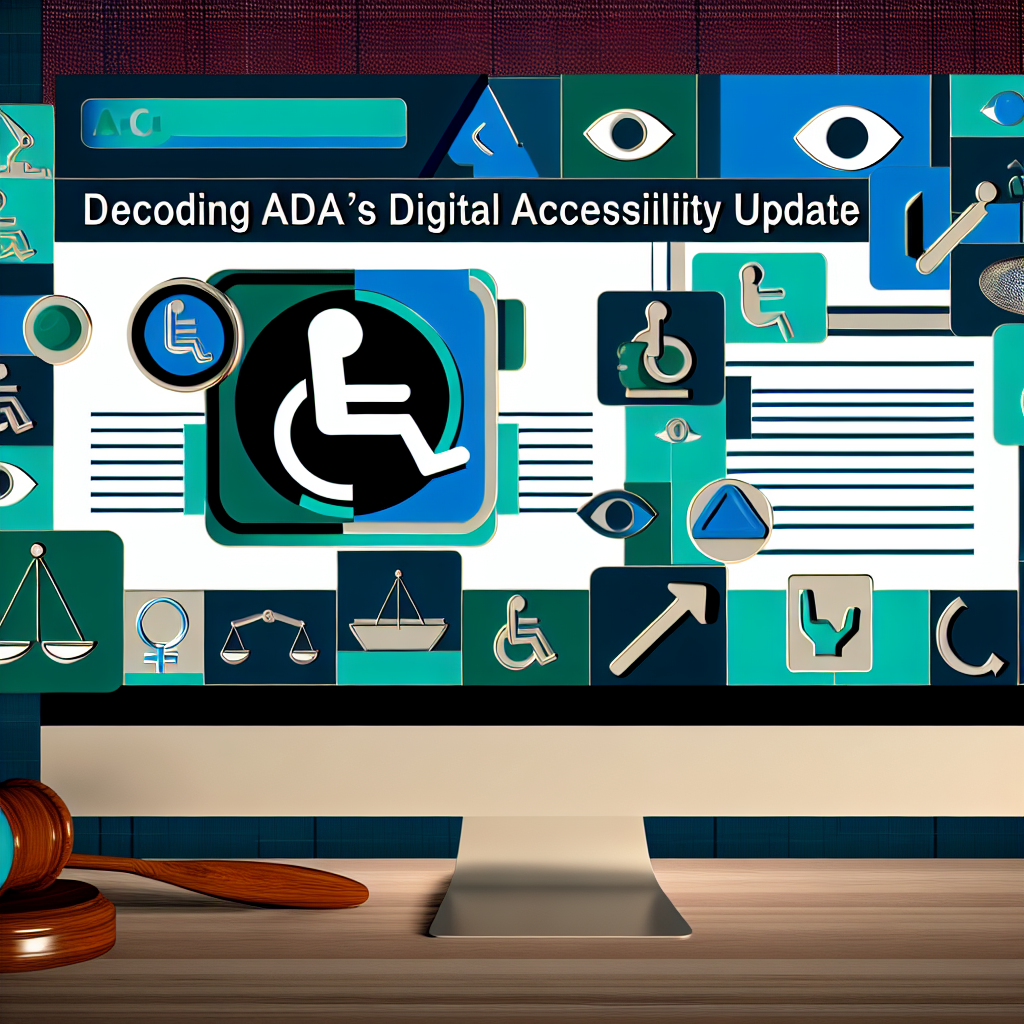Article analysis: Accessibility in the Spotlight: Department of Justice Regulations

"The rule emphasizes that public entities are responsible for complying with their ADA obligations even when their services, programs, or activities are offered through contractors such as learning management system companies, content from publishers, YouTube videos, social media, and the institution’s mobile app."
Accessibility in the Spotlight: Department of Justice Regulations
Summary
The article "Accessibility in the Spotlight: Department of Justice Regulations" discusses the significant update to the Americans with Disabilities Act (ADA) with the issuance of the new rule by the Department of Justice (DOJ) on June 24, 2024. This rule revises Title II ADA regulations, mandating specific technical standards for the accessibility of web and mobile services provided by state and local government entities, including public universities and colleges. Emphasizing universal design, the regulation aims to eliminate barriers to digital content, recognizing that accessible digital spaces benefit all users, but particularly those with disabilities. It adopts the Web Content Accessibility Guidelines (WCAG) 2.1 Level AA as an industry-standard, unified approach to digital accessibility, underscoring public entities' responsibility even when services are provided through contractors or third-party platforms. Crucially, this rule brings clarity to compliance by introducing a consistent standard for web and mobile apps while preempting less protective state laws. Compliance deadlines are based on the population served by each institution: large entities must comply by April 24, 2026, and small entities by April 26, 2027. Exemptions are narrowly defined, only applying to specific cases such as archived content and third-party posts. This regulatory action answers calls for mandatory measures following the insufficiency of voluntary guidelines to ensure equal access. Institutions must promptly address these changes, with WCET and SAN providing member-focused resources and discussions to navigate the implementation challenges.
Analysis
The article provides a comprehensive overview of the new ADA regulations, underscoring their importance for digital accessibility. As an advocate for democratizing access and leveraging technology to enhance data-driven decisions, I appreciate the article's attention to how these regulations could serve as a template for private institutions. However, while it outlines the compliance timeline and technical standards, it does not sufficiently address potential challenges institutions may face in implementing these regulations. There is an implicit assumption that adhering to WCAG 2.1 Level AA criteria will automatically result in meaningful accessibility improvements, but it overlooks the necessity for ongoing assessments and updates in response to technological advancements. Moreover, although the rule emphasizes accountability even when services are offered through third parties, the article lacks a discussion on the complexities of enforcing compliance across diverse digital platforms. This gap highlights a need for further research into the practical implications of these standards, particularly concerning an institution's ability to manage vendor relationships and ensure consistent accessibility. Lastly, while the article acknowledges the limitations of voluntary compliance, it could offer a more robust analysis on why such voluntary measures failed and how the new regulations specifically address these shortcomings, providing a richer context for understanding this regulatory evolution.
